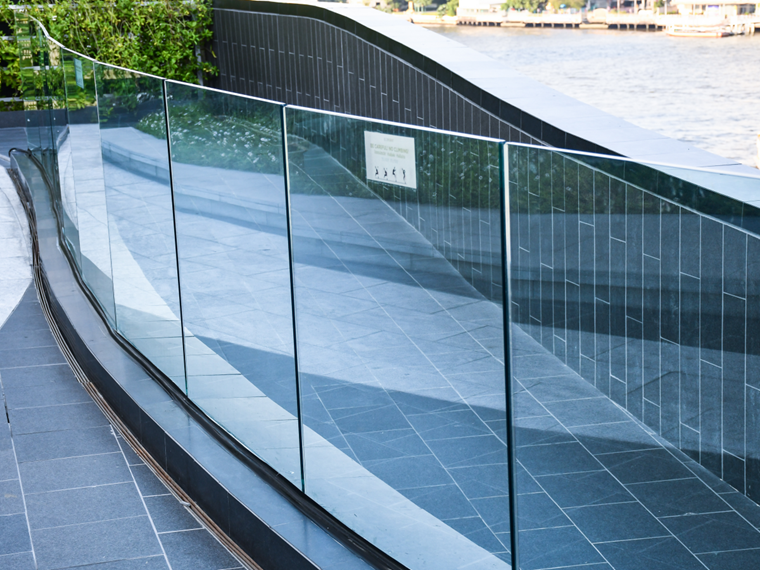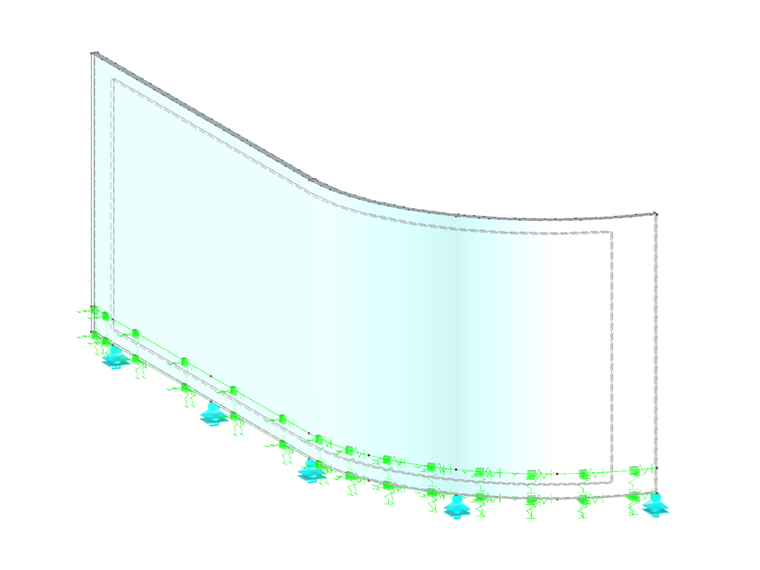Types of Modeling
The modeling is best done directly in RFEM. Two different options are available. On one hand, a railing can be represented as a wall structure; on the other hand, it can be represented by a solid model. Both variants have their advantages. In the first option, fewer FE elements are generated, so a shorter calculation time can be expected, and the modeling effort is very easy. Representation by solid elements, however, makes it possible to represent an accurate structural behavior when using, for example, laminated glass (shear coupling). Both options allow for straight and curved shapes. Therefore, we recommend estimating the requirements for the calculation before starting the modeling, then selecting the modeling type.
Options for Representing Supports
In the case of glass railings without further frame construction, the fastening type is usually carried out by means of a restraint or clamping in the lower area of the pane. This restraint can be represented by means of springs in RFEM. An arrangement of fixed line supports would also be possible, but could lead to the effect of an excessive load introduction in the support area. In reality, compliance will occur with this kind of restraint, which is why modeling by means of flexible springs is recommended.
Loading and Evaluation of Results
Loads from self-weight and external influences (for example, horizontal live loads) can be applied to the structural system by different load cases and combined with the corresponding safety factors. The self-weight is determined internally by the specific weight of the material used and applied by default to the self-weight load case. Additional loads can be assigned via point, line, or surface loads in the system.
The results are evaluated by comparing the tensile stresses occurring in the system. Glass has the property of having a very high compressive strength, but reacting in a very brittle manner when tensile stresses occur. Therefore, only tensile stresses are analyzed in the design. These have to be considered meticulously. Locations of singularity must not be disregarded or neglected. Furthermore, you should try to remove these locations from the system by means of FE mesh refinements or geometry changes in order to avoid generating any damage due to under-design.


.png?mw=760&hash=1a1d24b22d4579832919aae250926e74e5527d40)
